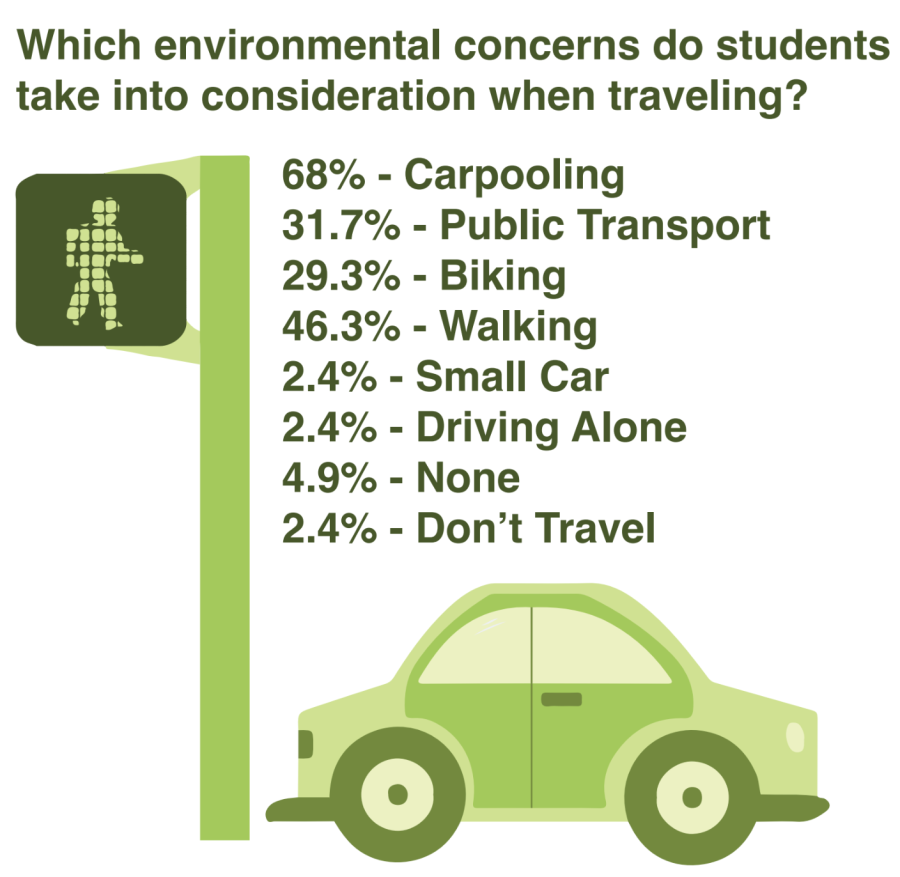Planes in our skies jeopardize our earth
Striving for eco-conscious travel
BLOT GRAPHICS BY Z. SABRINA LIDING, CINDY LIN, KATY UMBS, KATRINA HUNG, and TIMOTHY WILBURN
Survey of 41 CHS Students from Feb. 10 to Feb. 17.
March 31, 2023
Less than 100 years ago, a trip from New York to California would last nearly a week and cost a hefty price. Nowadays, it can be done in a matter of hours. With travel changing so drastically through the years and climate change becoming
a more apparent problem, travelers are rethinking the way they travel, starting from the second they embark for their destinations.
This has caused an uptick in ecotourism, a form of tourism that helps protect threatened, natural environments, support conservation efforts and discover wildlife, according to eco-advocacy blog treehugger.com.
Popular ecotourism destinations, such as the Galapagos Islands, known for its rugged terrain and unique flora and fauna, require tour groups to conserve water and energy, recycle and minimize waste and source locally-made products. Furthermore, 97% of the island chain is designated as a national park, meaning they can be thoroughly enjoyed without leaving a negative impact.
Environmentally sustainable travel is vital, as the current travel industry causes between 8% and 11% of the world’s greenhouse gas emissions — the majority of which come from transportation, according to the World Travel & Tourism Council.
This is especially important as popular tourist destinations such as the Maldives, Venice and Florida are predicted to be underwater by the next century as sea levels continue to rise as a result of global warming.
Being that the majority of the carbon dioxide emissions in the travel and tourism industry are a result of transportation, many airports have been working to cut back and provide eco-friendly spaces.
One of the most successful environmentally sustainable airports is Boston Logan International Airport, where 6-foot tall wind turbines placed on top of the airport’s offices contribute to their energy supply.
Another example is the Stockholm Airport in Sweden, which reached carbon neutrality more than a decade ago and is currently in the process of converting all airport vehicles to 100% fossil fuel-free diesel engines.
By prioritizing airports like these and using other sustainable practices, like flying directly to limit takeoff and landing emissions — which, reported by NASA, contribute to 25% of emissions during a normal flight — a traveler can promote eco-consciousness before even reaching their destination.
For those who don’t fly often or have the option to do so sustainably, there are countless other ways to travel and keep the environment in mind.
Junior Kaitlin Brice of Wall Township practices sustainable travel with the method of transportation she uses to arrive at closer destinations.
“I bike often because it’s a good workout and way to get to your destination without leaving a carbon footprint,” Brice said.
Another sustainable change that can be made to everyday travel is carpooling. By limiting the number of cars on the road, it is a popular and simple way to reduce carbon emissions.
“I like to carpool with my friends to soccer practice and other places, so that’s a step,” said junior Danielle Beattie of Wall Township.
Making an effort to travel more sustainably can ultimately make a difference in the Earth’s climate crisis.














